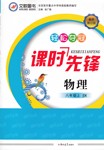题目内容
【题目】听下面一段较长对话,回答以下小题。
【1】What are the speakers arguing about?
A. Which way to go.B. Who to blame.C. What transport to take.
【2】Why did the policeman stop the speakers?
A. They took the wrong shortcut.
B. They drove beyond the speed limit.
C. They went through the red light.
【3】What was the initial(开始的; 第一的) reason for what happened to the speakers?
A. The woman didn’t prefer to travel by train.
B. The man failed to ask the way.
C. The man forgot to book tickets earlier.
【答案】
【1】B
【2】B
【3】C
【解析】
M: This is all your fault! This wouldn’t have happened if you hadn’t tried to give money to that policeman!
W: Well, if you’d listened to me when I suggested asking someone for directions, we shouldn’t have got lost in the first place, would we?
M: Oh, go on! Blame it all on me! You were the one who was driving when we got stopped by the police. If you hadn’t been speeding, we wouldn’t have been stopped at all!
W: That’s not fair. We were doing fine until you suddenly decided you knew a quicker way!
M: Oh, come on! I only suggest it because we were running so late. We would’ve been fine if you hadn’t suggested driving instead of taking the train.
W: No! We would’ve been fine if you had remembered to book tickets!
【1】此题为听力题,解析略。
【2】此题为听力题,解析略。
【3】此题为听力题,解析略。

 文敬图书课时先锋系列答案
文敬图书课时先锋系列答案